Shout At An Elephant: This Is How To Survive If You Come Face To Face With These Dangerous Animals In The Wild
With over 60% of Americans residing in cities, most don’t encounter animals in the wild daily. Encounters with wildlife are more likely during vacations, where animals like raccoons, deer, and alligators can pose a threat if provoked.
Read on to discover a compilation of expert advice on how to behave when encountering certain animals in their habitat. Learn what to expect and how to stay safe.
Let Bears Know You’re In The Area
Black bears are found throughout North America, while brown bears inhabit forests in the northern United States. And in Alaska, you may spot a polar bear. Unfortunately, as the population of the U.S. grows, human-bear accidents increase.
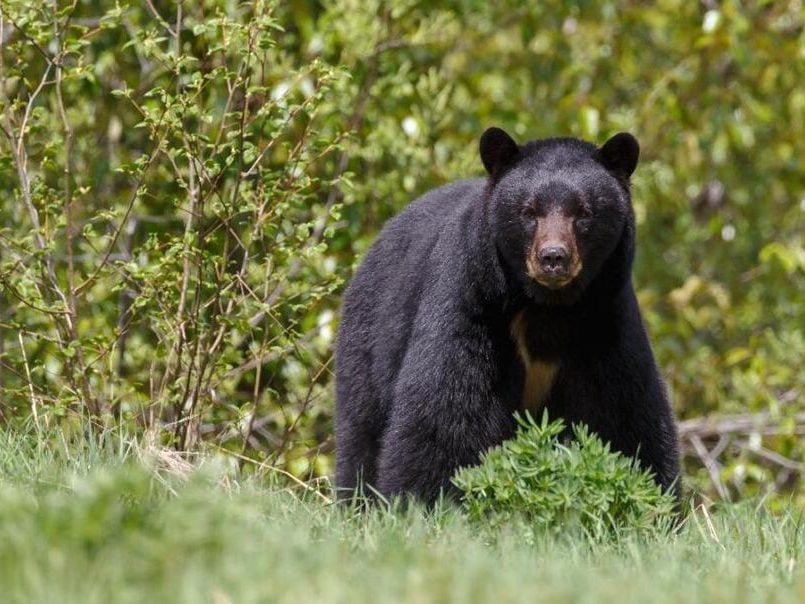
Source: patch.com
Bears are not naturally aggressive but can react when they feel threatened. When hiking in bear country, avoid startling bears, carry bear spray, hike in groups, and shout to alert the animals of your presence. If you see a bear, move away slowly, sideways, while keeping an eye on it.
Never Run From A Cougar
Cougars can be spotted all across the United States and are also known as pumas, mountain lions, or panthers. Despite their intimidating size, these 200-pound cats are more afraid of you than you are of them.
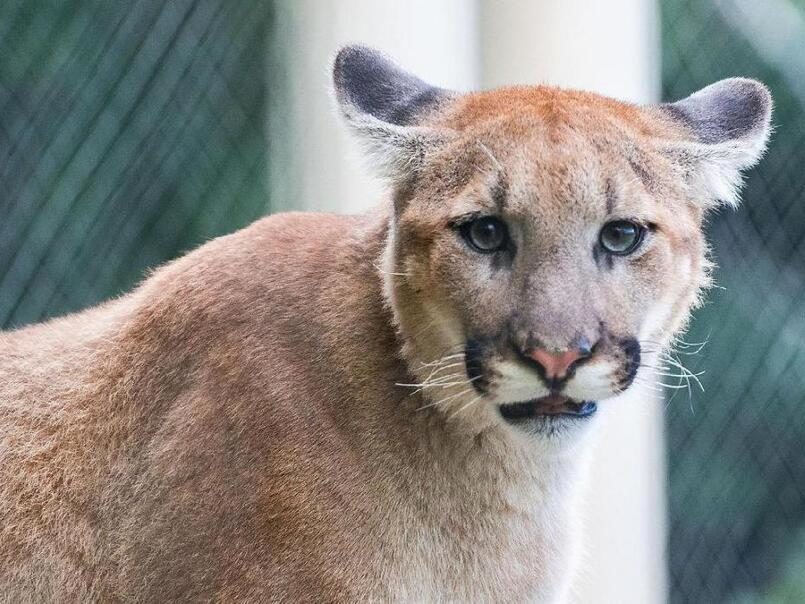
Source: Eric Kilby/ Wikimedia Commons
It’s very unlikely you will encounter them while hiking in their habitat. But, if you come face-to-face with a cougar, the National Park Service advises you to stand tall, maintain eye contact, and slowly back away. Running away may trigger the cougar’s instinct to chase you, so it should always be avoided.
Do Run From A Moose
Moose can be found in the forested areas of the Northeast, upper Midwestern states, Rocky Mountains, and Alaska. These giant mammals can appear intimidating, weighing up to a staggering 1,800 pounds and sporting antlers as wide as 6 feet.
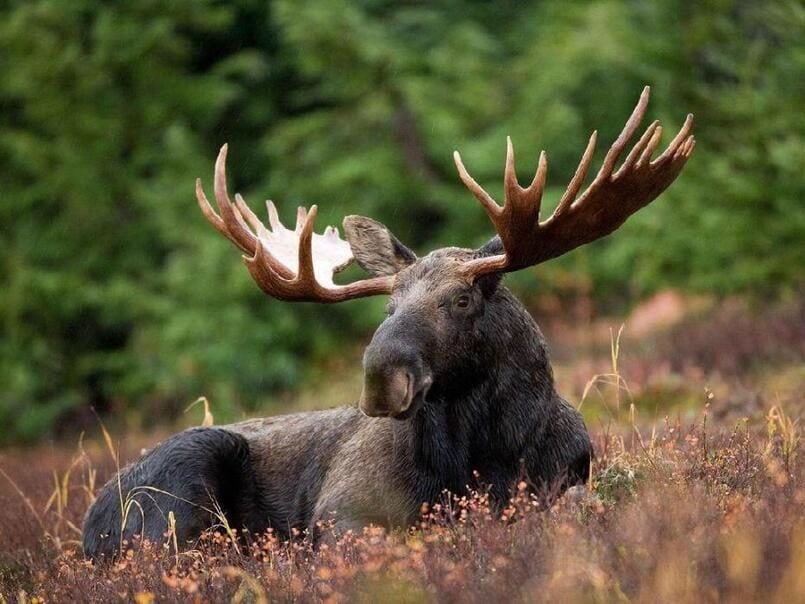
Source: Ryan Hagerty/ Wikimedia Commons
However, moose are generally solitary and will retreat when they feel threatened. Therefore, if a moose advances toward you, the best action is to run away as fast as possible and seek cover behind a large object like a rock or a tree.
Don’t Scare A Bison
American bison inhabit the Great Plains region and are the largest indigenous land mammal in North America, weighing up to 2,200 pounds. Do not let their size fool you–these animals are not slow. They can run at a speed of up to 40 miles per hour!
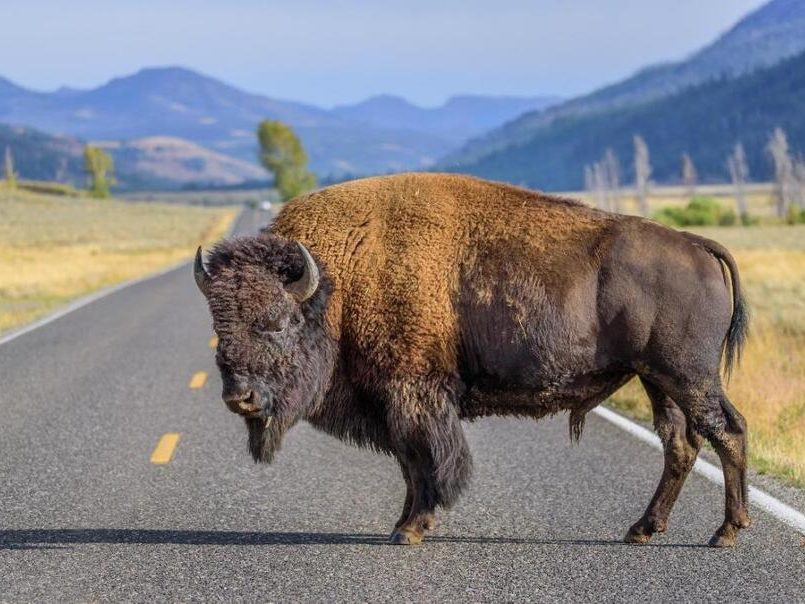
Source: www.lcpinc.org
If you encounter a bison while driving, simply drive past them slowly and do not leave your car. Avoid startling them on foot by announcing your presence and moving away slowly.
Avoid Eye Contact With Elk
Elk are found mainly in the western United States, mostly in protected habitats. While elk might appear gentle, they can be dangerous. When facing an elk in the wild, be in a group with your companions, avoid eye contact, and walk away slowly while keeping an eye on the elk for any signs of aggression.
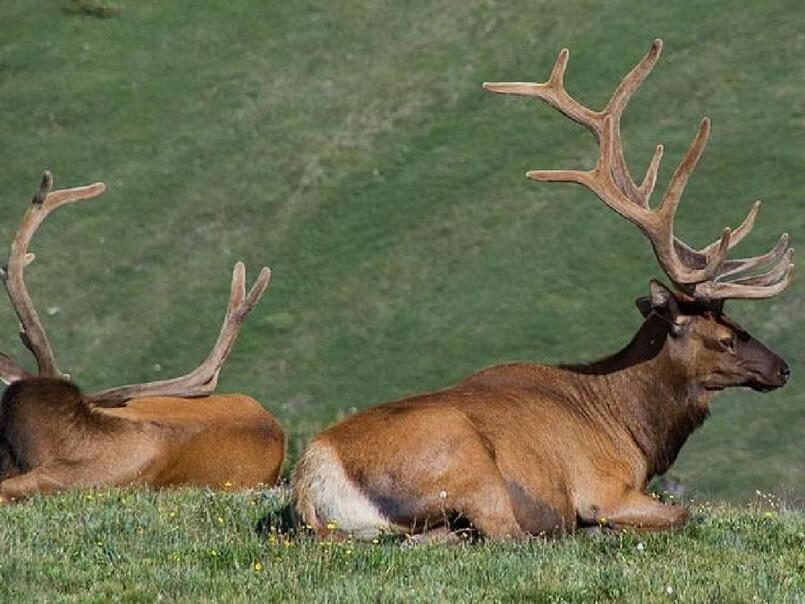
Source: Wikimedia Commons
In case of being chased, take cover behind an obstacle or climb a tree to escape. Be extra careful during the May to June period, when female elk defend their newborns, and during the fall rut from August through October, when bulls become more aggressive.
Remain Calm When Facing A Deer
North America has three deer species–white-tailed, mule, and black-tailed. They inhabit a wide range of areas and are a relatively common sight for most Americans. However, drivers should be especially cautious in deer habitats to avoid dangerous collisions. It’s recommended to drive with your brights on when possible.
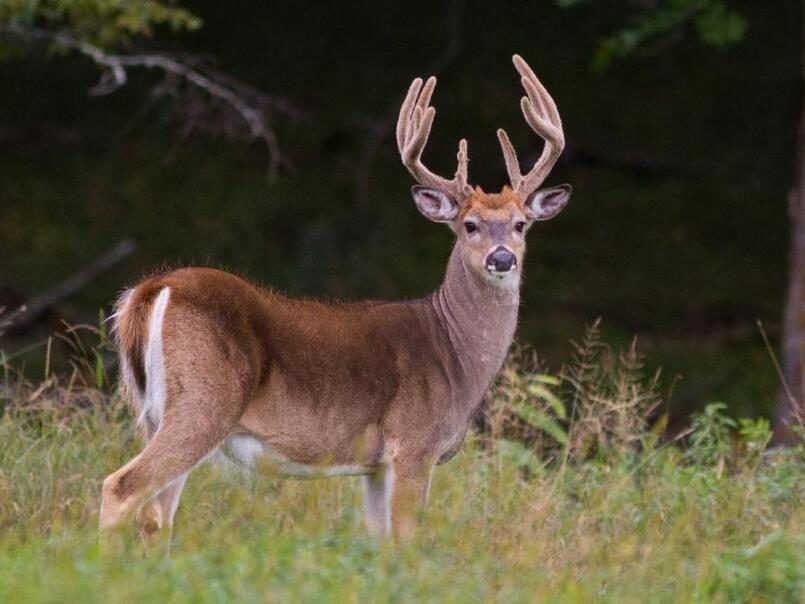
Source: www.vrbo.com
If facing a deer encounter on foot, slowly back away and impede their path with an obstacle like a backpack for protection if the deer becomes aggressive. During mating season, it’s essential to be extra cautious.
Beware Of Wild Boars Carrying Diseases
Wild pigs, or feral swine, were introduced to the U.S. by early settlers in the 1500s and have now spread to more than 35 states, with most of them being concentrated in the South. These omnivores threaten the environment as they eat almost everything in their path and may cause damage to wildlife and habitats.
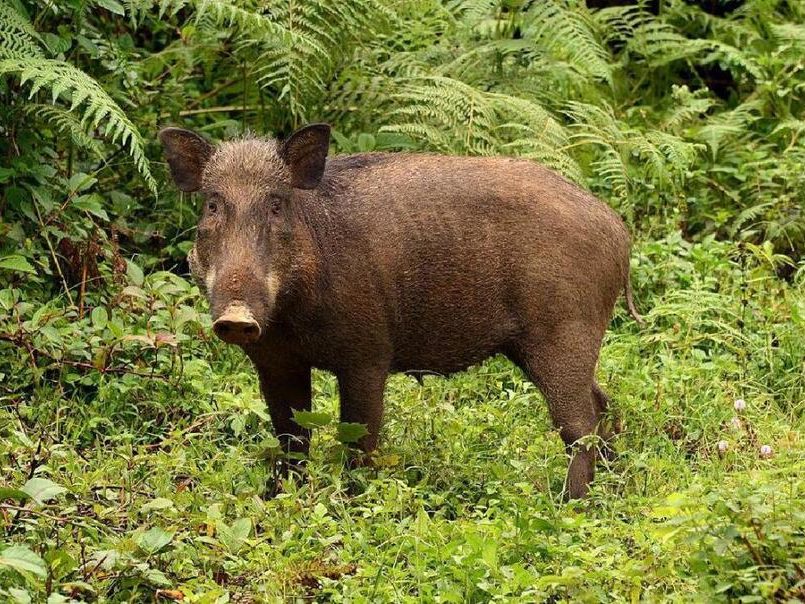
Source: PJeganathan/ Wikimedia Commons
Though not known to be aggressive, they can carry several diseases and parasites that can harm humans, pets, and livestock. If you spot these animals, stay back and alert wildlife officials immediately.
Deter Foxes By Scaring Them
North America is home to four different types of foxes, but encountering them during the day is uncommon since they typically run away from humans. Nevertheless, foxes can pose threats to domestic animals such as chickens, guinea pigs, and rabbits.
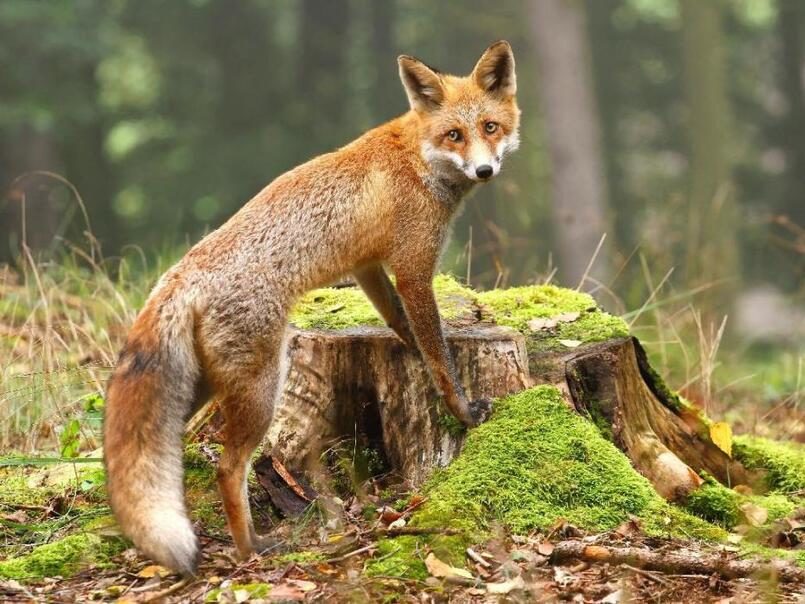
Source: dev-internal.djurensratt.se
To discourage foxes from coming near your home, try leaving shiny balloons, urine-soaked cat litter, and capsaicin-based repellents around your home. Additionally, making loud noises like banging on pots and pans or playing loud music can help to send the foxes away.
Pay Attention To How Adaptive Coyotes Are
Coyotes are cunning creatures located all over the United States, from the prairies to the cities. Despite living near humans, they tend to remain hidden from view. If you encounter a coyote and it doesn’t run away, make yourself appear as large as possible and try to frighten it by shouting, waving your arms, or throwing small rocks.
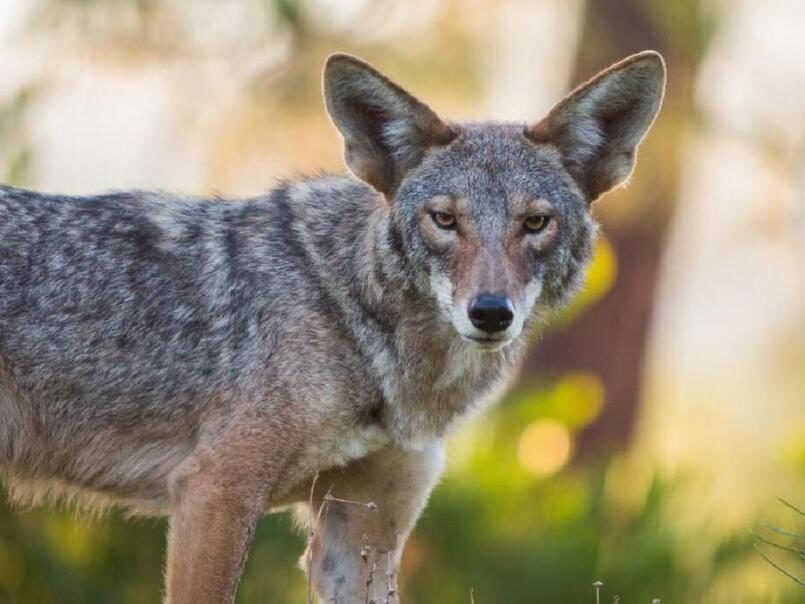
Source: Santa Monica Mountains National Recreation Area/ Flickr
Coyotes are adaptable and can pose a danger to pets, so it’s essential to protect your animals and keep them away from areas where coyotes are known to frequent.
Beware Of The Wolf’s Howl
Once widespread across North America, gray wolves are now primarily found in specific regions such as Alaska, northern Michigan, northern Wisconsin, western Montana, northern Idaho, northeast Oregon, and Yellowstone National Park. Meanwhile, red wolves can be found in eastern North Carolina.
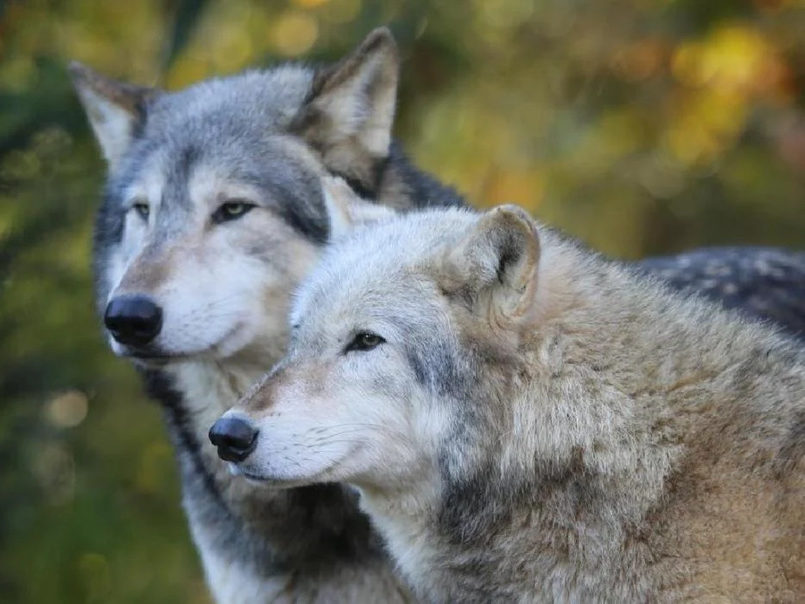
Source: Ronnie Macdonald/ Flickr
Although wolves have a fearsome reputation, they are not known to attack humans and usually prey on small pets or farm animals. As a result, they were hunted to the brink of extinction by settlers and farmers. If you encounter a wolf in the wild, maintain composure, keep direct eye contact, and slowly back away.
Poke Crocodiles And Alligators In The Eyes
American alligators lurk throughout the southeastern United States, while crocodiles are only present in Florida. Despite some physical differences, both alligators and crocodiles are members of the crocodilian family and possess powerful jaws.
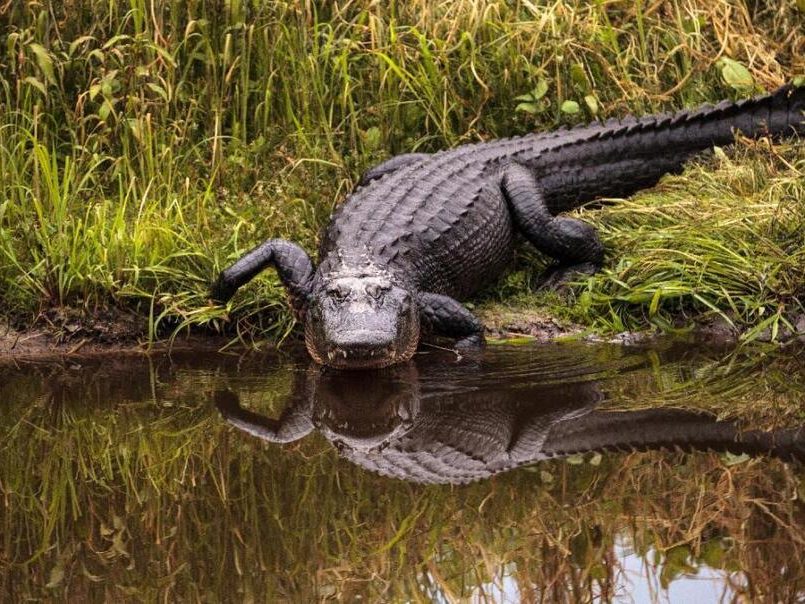
Source: www.kurir.rs
If you come into contact with an alligator on land, it is best to run away–fast. In the event of an alligator or crocodile attack in the water, aim for the eyes or snout. It will be impossible to force their jaws open, so aim for these most vulnerable spots.
Don’t Let Sharks Scare You
Different types of sharks inhabit the Atlantic and Pacific Oceans, and although they may seem frightening, it’s unlikely they will attack you. And even if you are unlucky enough to face this horror movie star, it’s possible to survive a shark encounter by swimming away calmly if the shark doesn’t show aggression.

Source: Albert kok/ Wikimedia Commons
However, if the shark starts to attack, try to maintain eye contact, and hit the shark in its sensitive areas, for example, on the nose or gills.
Give Owls Their Space
Various types of owls can be spotted all over North America, but it is uncommon for them to attack people. They usually prey on small rodents like rats and mice, although they may target small dogs if they are desperate and will even attack the dogs’ owners if they interfere.
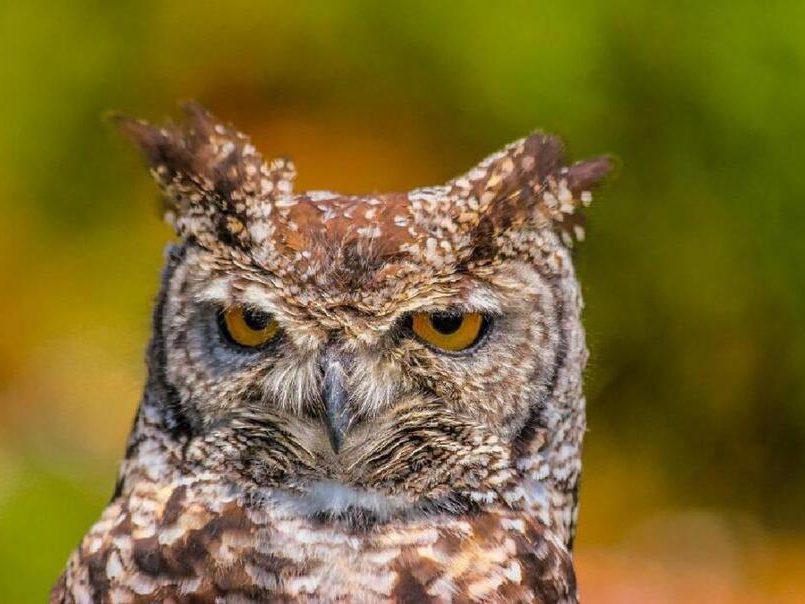
Source: Pixabay
If you get too close to an owl’s nest, the bird may become defensive and charge at you. If you hear an owl hissing or clicking its beak, step back and give it space, as that is a clear sign of attack.
Don’t Fear Raccoons, But Do Fear Rabies
Raccoons are a common animal seen across the United States, but they are not as threatening as bears or cougars. However, they can carry the rabies virus, so it’s best to avoid interaction with them.

Source: Paxson Woelber/ Wikimedia Commons
If you encounter a raccoon in the wild, it’s best to walk away. If raccoons frequent your home, you can use loud music and flashing lights to scare them off. To prevent them from returning, secure your garbage bins, keep pet food inside, and sprinkle cayenne pepper around the perimeter of your home.
Look Out For Opossum Dens
Opossums are primarily nocturnal animals and are found in the eastern, central, and western parts of the United States. They are the only marsupial in North America and are generally not aggressive, often playing dead rather than attacking when encountered.
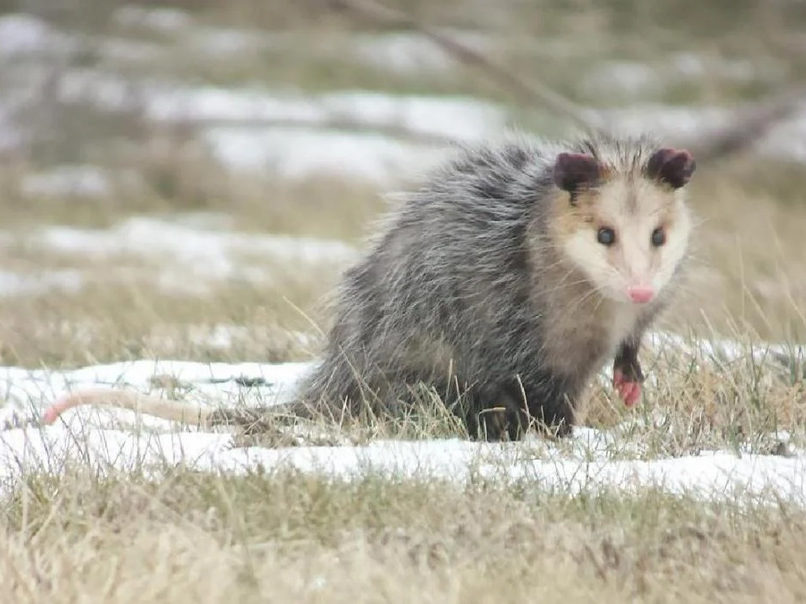
Source: Paul.J.Hurtado/ Flickr
However, they can be problematic if they make a den beneath your house or in other structures around your yard. So it’s important to close any openings and secure the area. If they make a nest, wait for the opossum to leave before sealing the hole with netting or straw.
Just Get Out Of The Way When It Comes To Snakes
Many types of snakes can be found across North America, but you only need to keep safe from the venomous ones like coral snakes, rattlesnakes, and copperheads. The best thing to do when confronting a snake, venomous or not, is to give them more than enough space to escape and avoid interfering with them.
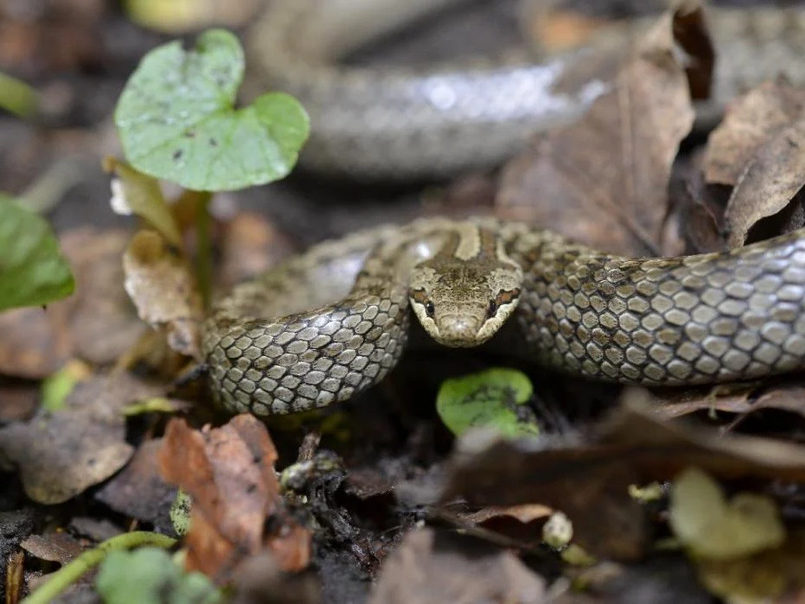
Source: www.dreamstime.com
Rattlesnakes give warning signs through their tail rattle. If hiking in areas with venomous snakes, wear long pants, and high-top boots, use trekking poles, and stick to cleared paths.
Try And Feed Feral Cats
Feral cats are the descendants of stray cats that did not have any human contact. They can be found almost anywhere in the world. These cats aren’t safe to handle as they are often too afraid of people and may become aggressive if approached.

Source: www.mtv.fi
However, the danger is not imminent, so you can try feeding them to see if they become more approachable. But if they continue to avoid human interaction, it’s best to contact the local animal protection that practices trap, neuter, and return (TNR). Neutering feral cats aid in keeping their population low.
Reintegrate Stray Or Feral Dogs
Stray dogs, similar to feral cats, can be found anywhere in the world. These dogs are either lost or abandoned and have adapted to living on the streets. They are mostly found in low-income and rural areas. In some cities, their numbers can be rather high.

Source: Andrey/ Wikimedia Commons
Unlike feral cats, stray dogs can be trained with careful effort and patience to become domesticated pets again. If you see a stray dog, look for its identification tag and contact your local animal management department before doing anything.
Keep Rats At Bay
Brown rats were introduced to the United States in 1775 and have since populated the entire country. These omnivorous rodents are skilled at living among humans due to consuming almost anything. However, be careful because rats can transmit various human diseases, like hantavirus, salmonellosis, and Lassa fever.
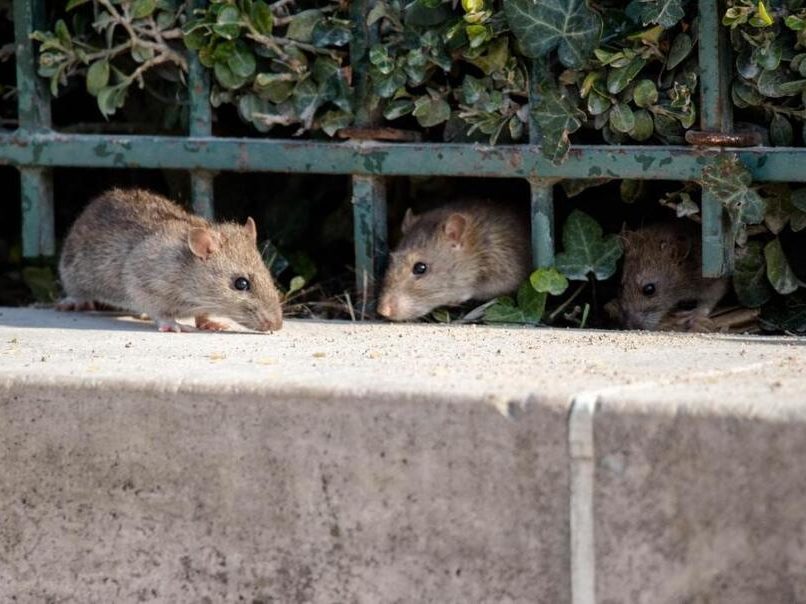
Source: www.liputan6.com
Though primarily active during dusk and dawn, rats can infest a neighborhood, and signs of their presence include droppings, burrows, and bite marks. Preventative measures such as cleaning up trash, sealing building holes, and using rodent repellents can keep rats at bay.
A Scorpion Won’t Seriously Harm You
Scorpions are found in the southern and southwestern United States. While all species are venomous, only the bark scorpion can cause serious damage. Adults stung by most scorpion species don’t need medical attention, but children and the elderly may experience a severe reaction. Symptoms such as pain, swelling, and tingling are normal.
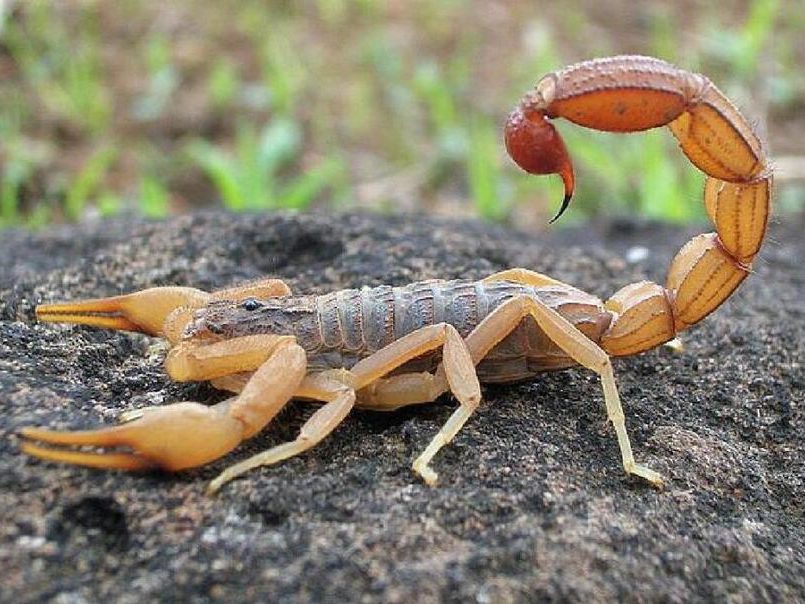
Source: Shantanu Kuveskar/ Wikimedia Commons
Seek help if there are more severe reactions like difficulty breathing or twitching. To prevent scorpion stings, keep them out of your house by cutting your grass short, disposing of trash and loose stones, sealing holes, and fixing broken window screens.
Keep A Black Widow Spider Bite Still
Black widow spiders are commonly found in the southern and western temperate regions of the United States. They are known for the red hourglass marking on their backs and their venomous bites.
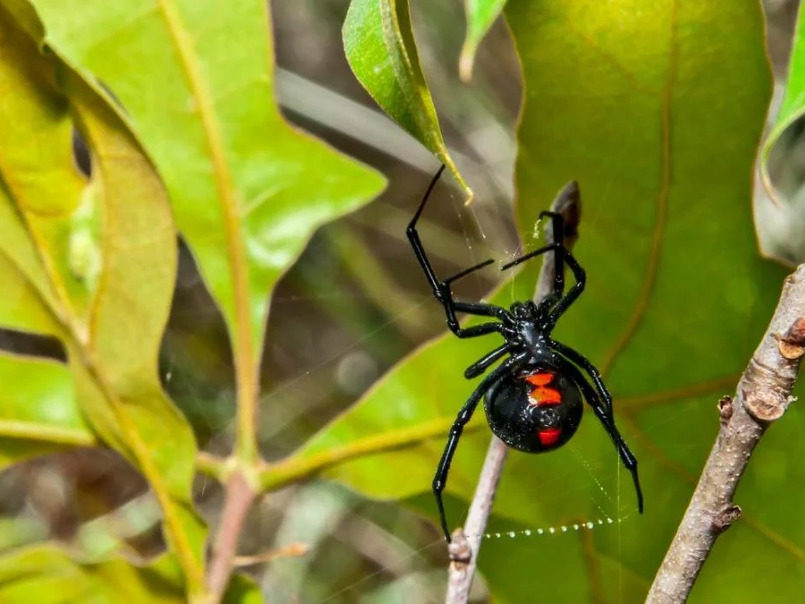
Source: www.insidermonkey.com
However, they rarely attack humans, and the symptoms are usually not serious if bitten. Nevertheless, it is best to call the Poison Control Center and wash the bite with soapy water while keeping the affected area still. Black widows typically live in outdoor structures, so if you know you’ll be working in one, wear long clothing to protect yourself.
Do Not Be Fooled By Friendly Looking Elephants
Despite their seemingly gentle appearance, elephants are quick and easily agitated creatures. If confronted by an elephant, it’s important to stay calm and hold your ground. The animal may flap its ears and make aggressive noises, but usually, it will only charge at you as a show of force.

Source: Getty Images
Make yourself looks as big and loud as possible, and then move away from the elephant. However, it’s important to note that if an elephant does attack, it uses its tusks to gore and trample its victim.
When It Comes To Hippos, Just Stay Away
Hippos cause more loss of human life in Africa than any other wild animal. Avoid encountering a hippo by staying away from their watery habitats, as they see any intrusion as a direct threat.
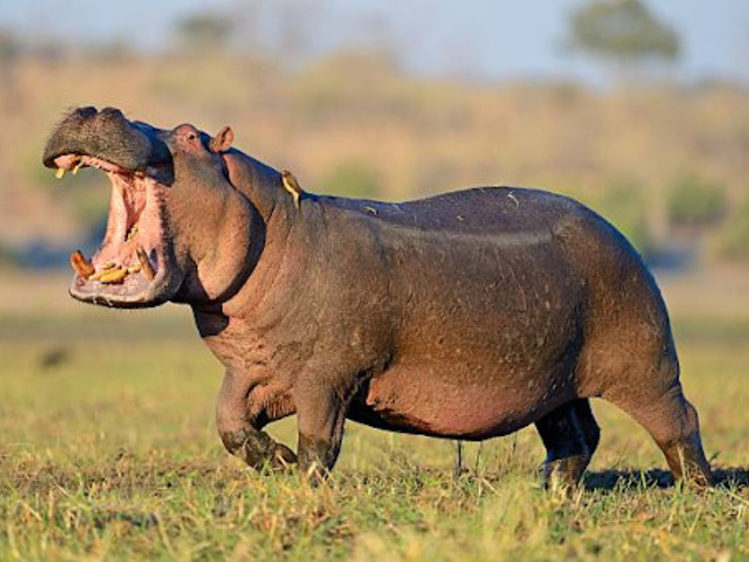
Source: Getty Images
Hippos can run at high speeds, so it’s best to find the nearest cover or climb a tree if you find yourself face-to-face with a hippo. In an attack, a hippo will likely go for the midsection and bite with its jaws and teeth, which resemble a large hole punch.
Look Lions Straight In Their Eyes
When faced with a lion, it’s vital to make direct eye contact and not break it. Slowly back away without turning your back or running, as sudden movements might trigger an attack. Lions may do one or two mock charges before launching a full attack, running toward you, and stopping abruptly a few paces away.
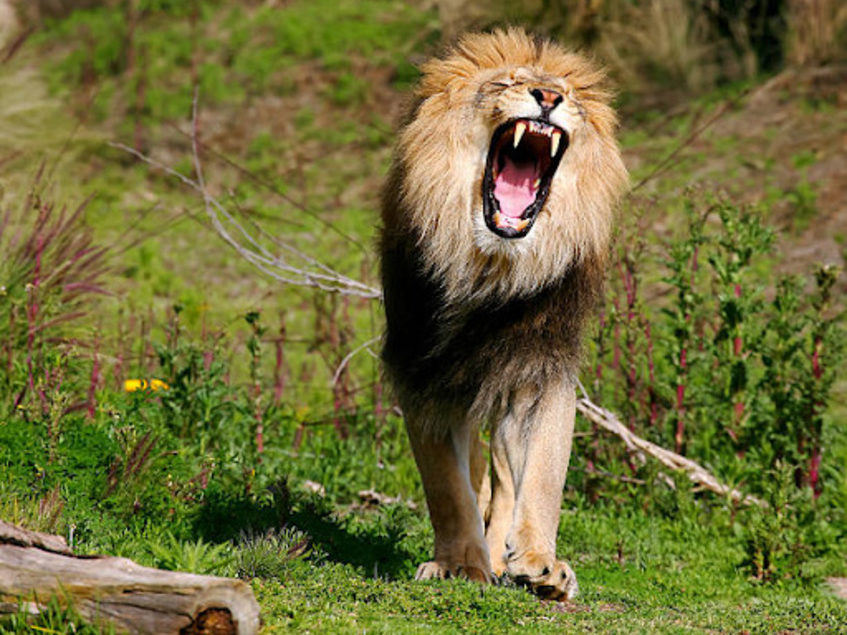
Source: Getty Images
If the lion does this, throw your arms out to make yourself look more menacing and make as much noise as possible. However, if it attacks, a lion will aim to get its jaws around your windpipe and suffocate you to death.
Silent But Deadly Leopards
Leopards are solitary and stealthy hunters. They use the element of surprise when they hunt, which makes it difficult to spot them before they’re too close. Remember this is not a lion, so it’s important not to make direct eye contact, as this may be seen as a challenge.
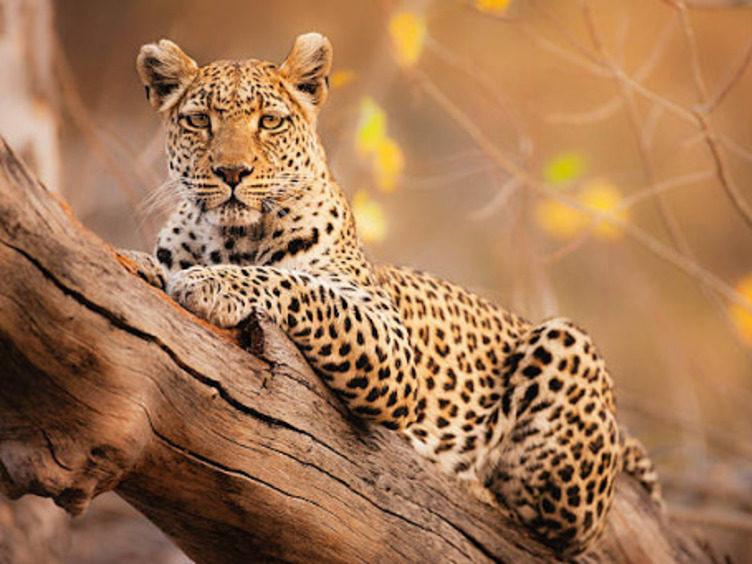
Source: Getty Images
If faced with confrontation, stay still and make yourself look big and loud–as loud as possible. Leopards kill by suffocation, similar to lions, to avoid alerting competing predators to their kill.
Run in Zig-Zags to Outsmart a Rhino
Rhinos are pretty menacing. They have large intimidating horns and intimidating faces. They also have thick skins. But these highly defensive body parts perhaps came at a price. Rhinos can’t see well beyond a hundred meters.
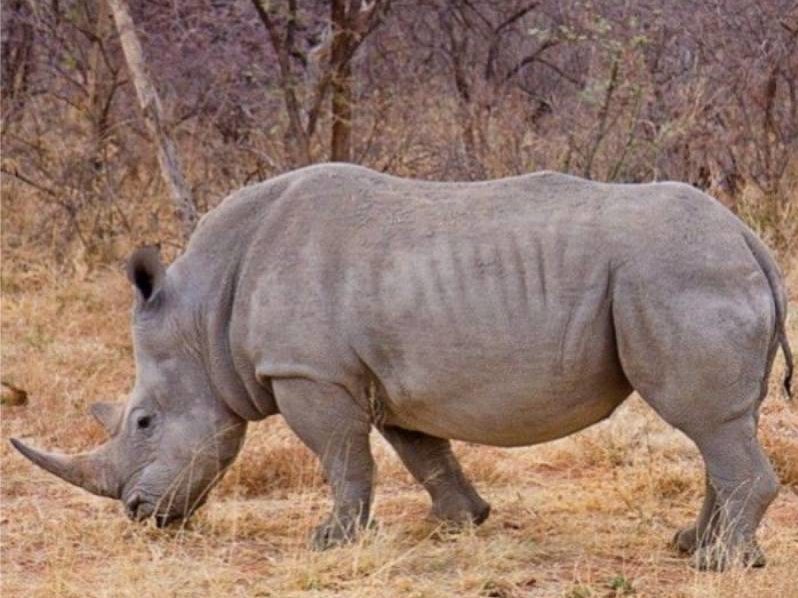
Source: Wikipedia
So if you find yourself in danger of a rhino attack, first stay still. Rhinos will mistake a still human for a tree and walk right past. If they are already charging at you, run in zig zags to confuse the mammal or climb a tree. Good news! Rhinos can’t climb.
Walk Away From Kangaroos Sideways
Depending on your distance from the animal, running away from a Kangaroo could be futile. Here’s what you should do if one charges at you. First, make your body slimmer to its eyes by facing it sideways. This action will keep your sensitive organs and face out of harm’s way.

Source: Sufficient-bug-9112/Reddit
Then raise your hands and walk slowly away, still showing the Kangaroo your side. As a last resort, curl your body into a ball while you call and wait for help.
Here's How To Ward Off Aggressive Chimps
The DNA of Chimpanzees is 98% like those of humans. But that doesn’t count if these mammals get angry at you. Chimpanzees can inflict life-altering injuries on humans and animals alike. If one is unlucky, their attacks could end a life.
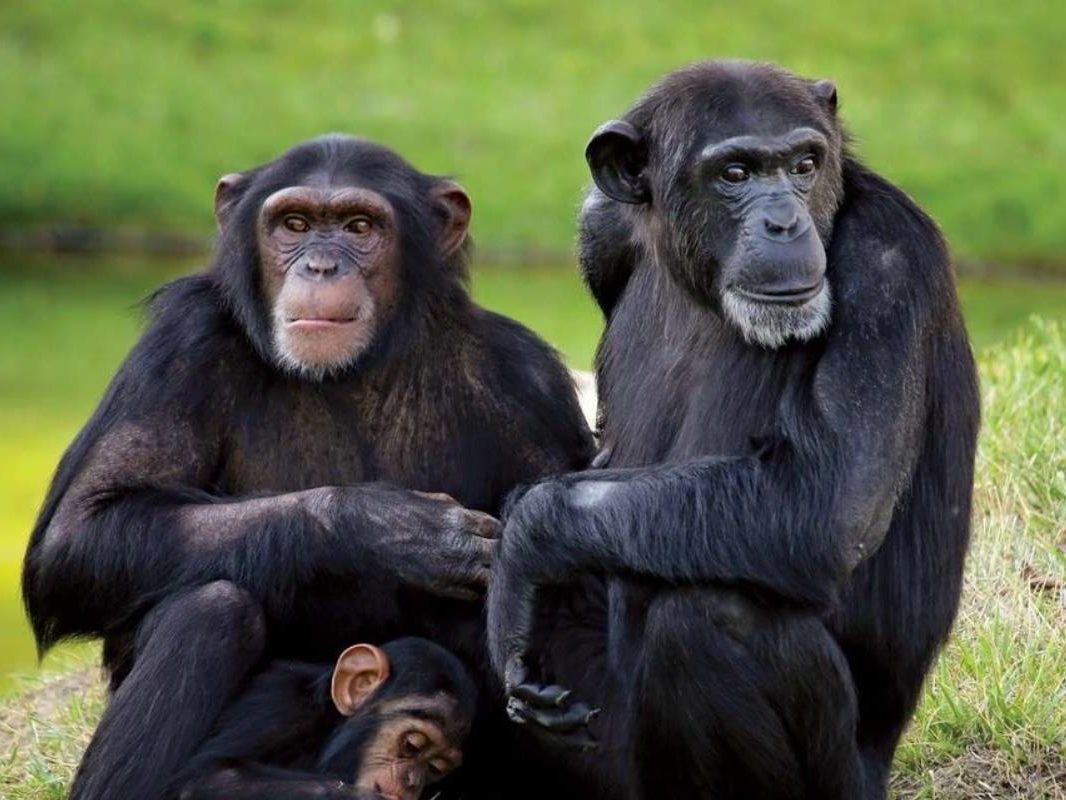
Source: Encyclopedia Britannica
If you are face to face with an enraged Chimp, you must keep your cool as much as you can. Don’t shout. Ward off the animal with a stick or a similar object while keeping your face as far away as possible. Also, if you are a good swimmer, diving into a river can help. Chimpanzees aren’t great in water.
Keep Your Voice Down Around Koalas
If you have reason to venture into Koala territory. Especially around one of their favorite trees, the Eucalyptus, you should keep your guard up. As lovely as these mammals can be, they could be pretty aggressive.

Source: Encyclopedia Britannica
If they are about to attack, here’s what you should do. First off, don’t scream. Screaming would irritate them further. Koalas have dangerous teeth and claws. So grab a stick and push them back till help arrives.
Look Aggressive to Scare Hyenas
You aren’t likely to encounter a hyena while you walk on the streets except if you live in some rural parts of Africa or are on a Safari trip. The best way to survive a hyena attack is to prevent one. Hyena jaws are super powerful and built to crush the bones of even larger animals, and therefore, humans will be no match.
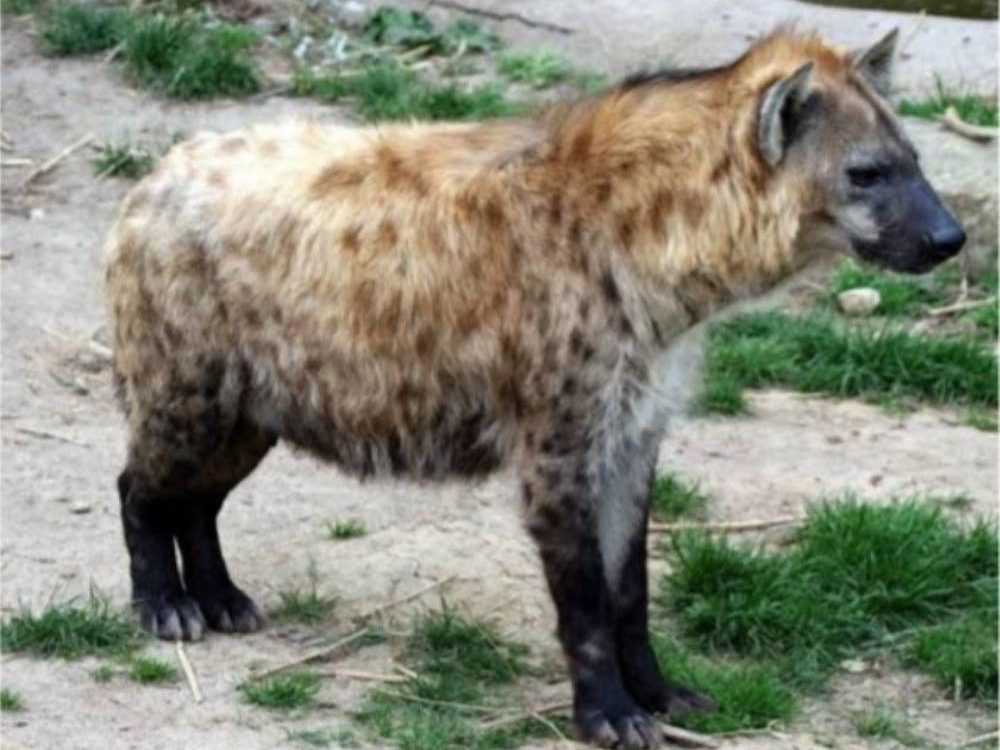
Source: Britannica
If a hyena is on the verge of launching an attack at you, don’t run. Except you can move at 40 meters per hour, which would be a first for any human. Don’t show fear either. Don’t run away or turn your back. Shout and look aggressive, pretending to be about to attack without moving towards the animal. The hyena should retreat.
